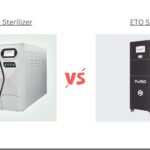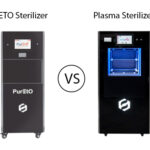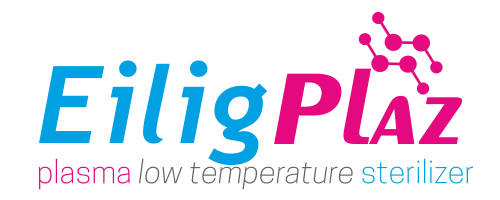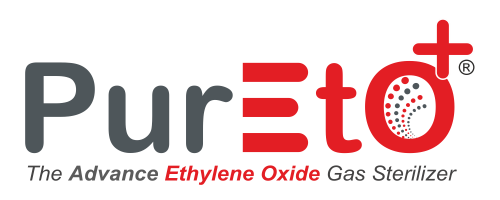Types of Sterilization Method Used in Microbiology

Sterilization is widely employed to destroy all forms of living microorganisms in a substance. Sterilization method aims at preserving the substance for a long time. It involves the application of heat/chemical on the substance like drugs, food, surgical equipment, nutraceuticals etc. if food materials are not subjected to sterilization, chances are that it contains dangerous bacteria which can cause severe infection when consumed. Disease-causing bacteria usually don’t visible to naked eye and hence a variety of sterilization techniques are employed in microbiology.
Types of sterilization
Although there are many techniques of sterilization available out there, heat and chemical method is widely employed to sterile metals and food substances. Apart from that, there are numerous techniques out there. In this article, you can go through the most commonly used sterilization techniques.
-
Gaseous sterilization method
Despite heat sterilization is unstable for thermolabile equipment like delicate, plastic and rubber items, it has become popular due to its capital cost. This method applies a chemical in a gaseous state to destroy micro bacteria. Ethylene oxide is widely used in this method for medical and pharmaceutical fields.
-
Preservation
Preservation involves the application of salt on various substance like fish, cereals. Metals and other food materials. Drying is an essential technique that preservation requires. Most of the food can be preserved in our kitchen through this amazing method. When a food substance is salted, it undergoes diffusion, which increases the salt concentration and reduces the water molecules, then it undergoes the osmosis process where microbes in it shrivel and die. The same technique is used in highly sugared foods such as jams, jellies, syrups etc.
-
Filtration Method
Filtration involves removing microbes from a solution using a filter. When a liquid passes through the mechanical filter, microorganisms are trapped in the small pores of that filter. The fluid that a container receives has no bacteria as it is sterilized. Yes, the fluid is decontaminated by just using a filter. Since the filtration method is user-friendly, it is widely employed in beverages, bacteriological media, pharmaceuticals etc. There are several types of mechanical filters are available for this method such as Chamberland Filters, Berkefeld Filters, Mandler Filters, Fritted-Glass Filters, Asbestos Filters, Jenkins Filter, Ultrafilter, Membrane Filter, Cleaning Filters
-
Radiation
Ultraviolet light is effective for controlling microbes in the food substance. It has a higher wavelength that lies between 100 nm and 400 nm. The energy is about 265nm, which is strong enough to destroy microbes. When microbes are subjected to radiation, ultraviolet radiation penetrates into the core DNA and thymine molecules. During the process of photosynthesis, the linked thymine molecules could not align the adenine of RNA molecules, as a result, the molecular structure changed. Further, the chromosome replication is impaired. Since this microorganism is damaged, it cannot produce proteins and dies shortly. It is not surprising that the ultraviolet rays from the sun play a vital role in controlling microorganism in the layer of air and soil. The same way, ultraviolet is used to reduce the microbe population. It is also used to reduce the surface contamination in the morgue, toilet, pharmacy, hospital room, food operation room etc.
-
Infrared Radiation
When a substance is exposed to infrared radiation of 0.3 to 0.4 Mrads, it can cause tenfold reduction in the microbes endospores. Ionizing radiation is widely employed to sterilize substance. Mostly, plastic substances that contain microbes are subjected to sterilization by using gamma radiation. Most of the sterilization procedures involve exposure to radiation of cesium 137. When microorganisms are subjected to sterilization by exposing them to infrared or microwave radiation of higher temperature, microbes can be killed indirectly. However, microwaves don’t kill the microbes directly, hence food items that are baked in the micro ovens may not kill these microbes.
-
Ultrasonic waves
Ultrasonic frequencies are not audible to human ear. Ultrasonic vibrations are used for research and study parts of tissues. The dentist uses the Cavitron device to clean teeth and destroy bacteria. The ultrasonic machines are used for cleaning dental plaques, coins, metals, jewelry etc.
-
Heat Method
Heat method is the most common method of sterilization that kills the microbes directly. Depending on the duration of heating and the temperature of heat, the effect of sterilization varies. When a substance is exposed to the direct flame for a long time, the microbe molecules shrink and die. The two types of heat methods are dry heat methods and moist heat methods. Heat method is the easiest way to kill harmful bacteria that survive on the food particles.
-
Moist heat Method
Here, the substance is subjected to sterilization by applying heat flame directly. Some of the most common moist heat methods are boiling, pasteurization and autoclave method.
- Boiling technique is widely used for sterilization of metallic devices like scalpels, surgical scissors, needles etc. These substances are boiled to high temperatures to kill the disease-causing bacteria.
- Pasteurization- It is the simple process of heating milk at high temperatures. Once the milk is boiled, it is again subjected to cooling. In this way, microbes in the milk get killed automatically.
- Autoclaving- It is a type of sterilization that uses steam sterilization equipment. Here, any substance is exposed to a temperature of 115 degrees for an hour. It is a powerful method for killing bacterial spores.
-
Dry Heat Method
Dry Heat Method involves Flaming, incineration and hot air oven techniques.
- Flaming- Here, the substance is exposed to the flame for just a few minutes. The flame will burn out the microbes directly.
- Incineration - It is an effective method of sterilization in microbe cultures. The end of the microbe loop is exposed to red hot flame;thus, it kills microorganism. It is the easiest way to destroy microbes in metals.
- Hot Air oven - The application of hot air oven is dry materials like glassware, heavy metals, thermostable materials etc. Here, hot air is allowed to circulate at a certain time and temperature. This way hot air oven works.
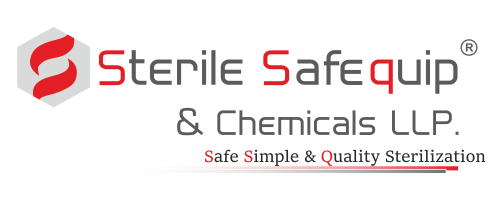

 Previous Post
Previous Post Next Post
Next Post